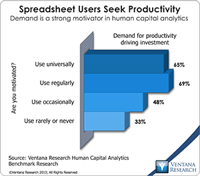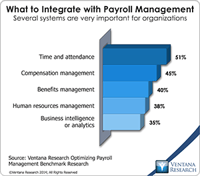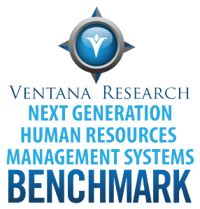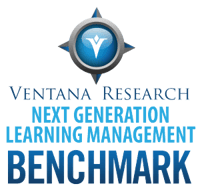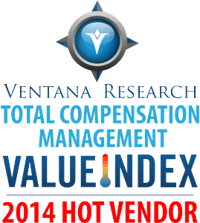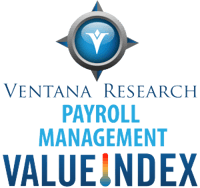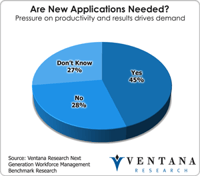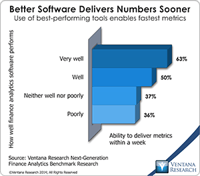Many of us can recall the excitement generated by the first Applicant Tracking Systems or ATS’s hitting the market in the late 1990s and early 2000s. After all, activities related to sourcing, screening, selecting and offering jobs to candidates was perennially a very manually intensive endeavor that also produced many false positives (unsuccessful hires) as well as false negatives (potentially great hires that were never brought into the recruiting process). The first wave of ATS’s proved to...
Read More
Topics:
Human Capital Management,
Recruiting,
HR,
Talent Management,
Talent Acquisition
This analyst perspective (presentation) covers how Compensation Management, related enabling technologies and data strategies continue to evolve, particularly in the context of prominent business issues facing all organizations today.
{% video_player "embed_player" overrideable=False, type='scriptV4', hide_playlist=True, viral_sharing=False, embed_button=False, autoplay=False, hidden_controls=False, loop=False, muted=False, full_width=False, width='1440', height='810', player_id='34510456443',...
Read More
Topics:
HCM,
Compensation,
HR,
Talent Management,
TCM,
HR Tech,
HR technology,
Total Compensation Management,
HCM Systems,
employee experience,
People Analytics
Enterprise resource planning (ERP) is a software category that includes an array of business applications that includes human resources and finance. Workday is a vendor at the center of a new generation of ERP. My colleague Robert Kugel recently covered that company’s advances in finance using cloud computing to operate its platform. And I recently attended Workday’s technology analyst summit, where I got a deeper view of the technology under its applications and its efforts to perfect its...
Read More
Topics:
HCM,
Human Capital Management,
Uncategorized,
HR,
Talent Management
Historically workforce management has been centered on tracking time and attendance, absences and leaves. Organizations view the time and attendance system as the top priority to integrate with the payroll system; in our payroll management benchmark research half (51%) of organizations called it very important. However, only one in five have integrated the two to streamline processes. So limited an administrative and operational focus does not contribute to improving worker productivity or...
Read More
Topics:
Human Capital,
Human Capital Management,
Mobile Technology,
Wearable Computing,
Operational Performance,
Business Analytics,
Business Collaboration,
Business Performance,
Cloud Computing,
Financial Performance,
HR,
Risk & Compliance (GRC),
Workforce Management
Ventana Research defines a human resources management system (HRMS) as the set of applications and associated processes that store and manage the employee information used by an organization’s human resources department. New technologies make it possible for the HRMS to perform better and be easier to use by HR professionals and members of the workforce. The range of evolving technologies impacting the development of the HRMS include business analytics, big data, cloud computing, mobile...
Read More
Topics:
Social Media,
Human Capital,
Human Capital Management,
Mobile Technology,
Operational Performance Management (OPM),
Business Collaboration,
Cloud Computing,
Business Performance Management (BPM),
HR,
HRMS
As organizations look to improve the competency and skills of their workers, learning management system (LMS) technology can help improve their efforts. Our latest benchmark research in next-generation learning management systems finds a range of progress in this regard. Our Performance Index analysis places organizations almost evenly between the two lowest (51%) and the two highest (49%) of four levels of performance. The results differ by size of company as measured by number of employees....
Read More
Topics:
HCM,
Human Capital,
Human Capital Management,
LMS,
Learning Management,
Operational Performance,
Business Performance,
HR,
Talent Management
It is more important than ever for businesses to attract and retain the best talent, and managing compensation effectively is an essential tool for doing so. Obviously companies must pay well to compete, but managing salary, merit pay, variable pay and incentives for employees, tracking their hiring anniversaries and conducting accurate performance appraisals make total compensation management a complex process. All of this must be managed within budget and policy guidelines. As organizations...
Read More
Topics:
HCM,
Human Capital Management,
Sales Compensation,
Operational Performance,
Business Performance,
Customer & Contact Center,
Financial Performance,
Workforce Performance,
CFO,
Compensation,
finance,
HR,
Talent Management,
TCM
To help companies improve the efficiency and effectiveness of their payroll management processes, we have assembled our 2015 Value Index for Payroll Management. It evaluates vendors of payroll management software to provide a guide for selecting the right application to suit specific needs. The executive summary is available for download, and this analysis provides a snapshot of the findings. Ventana Research defines payroll management as all activities associated with paying employees...
Read More
Topics:
Human Capital Management,
Office of Finance,
Uncategorized,
HR,
HRMS,
Talent Management
A company’s enterprise resource planning (ERP) system is one of the pillars of its record-keeping and process management architecture and is central to many of its critical functions. It is the heart of its accounting and financial record-keeping processes. In manufacturing and distribution, ERP manages inventory and some elements of logistics. Companies also may use it to handle core human resources record-keeping and to store product and customer master data. Often, companies bolt other...
Read More
Topics:
Sales Performance,
Supply Chain Performance,
ERP,
Office of Finance,
Operational Performance,
Analytics,
Business Performance,
CIO,
Customer & Contact Center,
Financial Performance,
Workforce Performance,
CFO,
Data,
HR
Read More
Topics:
Microsoft,
Mobile,
SaaS,
Sales,
Sales Performance,
Salesforce.com,
Supply Chain Performance,
ERP,
HCM,
Human Capital,
Office of Finance,
Dynamics AX,
Dynamics GP,
Dynamics NAV Dynamics SL,
Kenandy,
PSA,
Sage Software,
Unit4,
Operational Performance,
Analytics,
Business Analytics,
Business Collaboration,
Business Performance,
Cloud Computing,
Collaboration,
Customer & Contact Center,
Financial Performance,
Workforce Performance,
CFO,
FinancialForce,
HR,
Infor,
Workday,
HANA,
Plex,
Professional Services Automation


